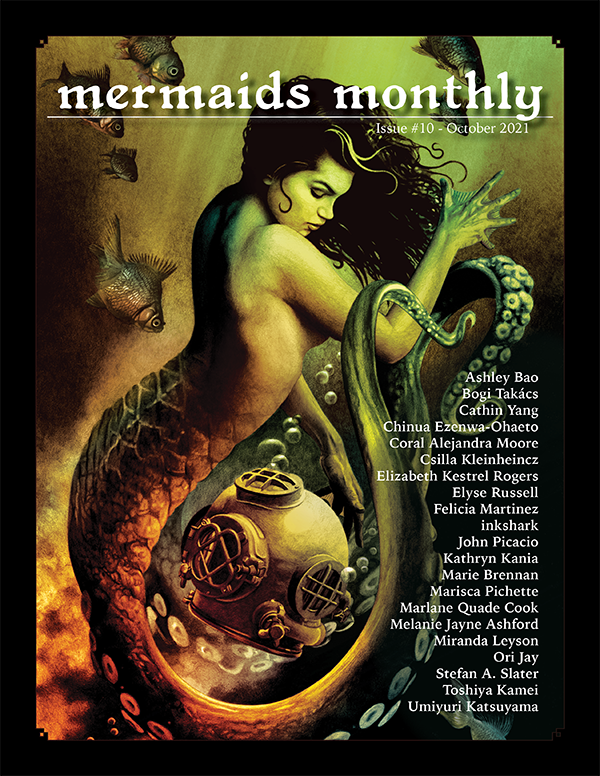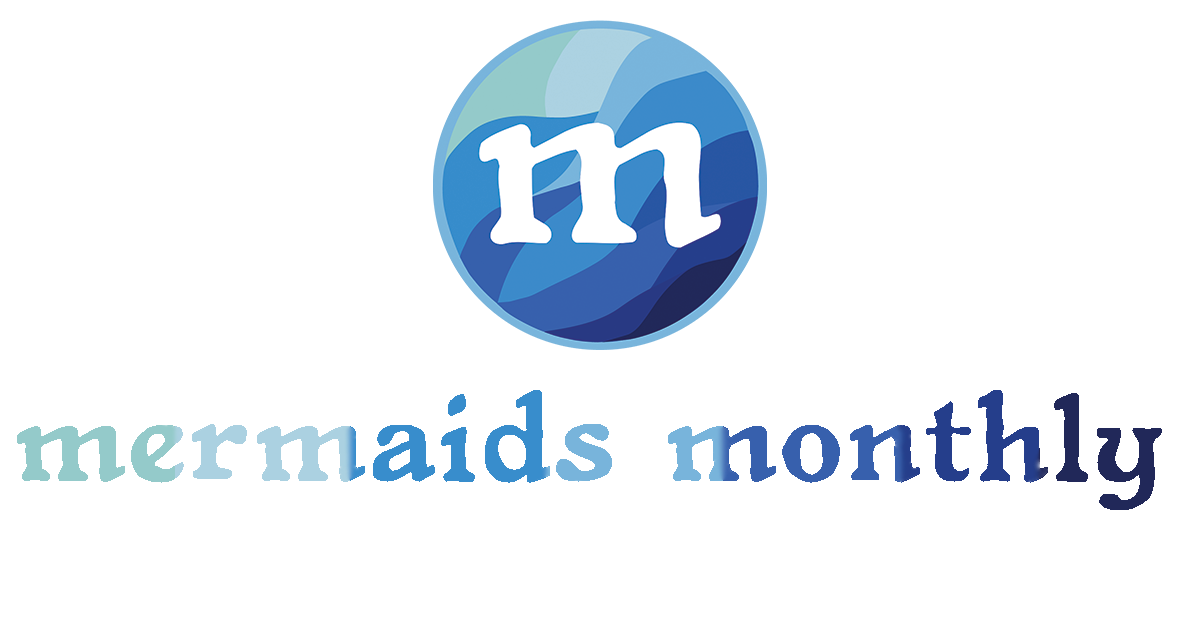by Melanie Jayne Ashford
You might think mermaids belong in a fantasy novel, but to people like me, they’re symbols of difference and diversity. Mermaids are almost always seen as beautiful and agile, despite their noticeable physical differences, and for many of us, this reflects the beauty of being disabled or ‘different’ in some other way.
I live with moderate hearing loss, which requires hearing aids, and I’m a demisexual lesbian. I often feel like I’m something odd or different that no one else really understands. Sometimes I think there is no one else in the room even remotely like me. It can be isolating and confusing.
As a fan of fantasy and science fiction, it’s easier for me to connect with characters who are vastly different than the average human being, such as aliens, werewolves, and mermaids. In addition to the differing physiology, the ethereal quality of merfolk seems to resonate with those of us who are different. Mermaids are clearly half-designed to function similarly to regular human beings, but they can’t move around the land in the same ways. However, they are perfectly designed to move around their underwater world, and for me, at least, this is a metaphor for being differently-abled, as opposed to disabled. The Little Mermaid is a classic example. She is differently-abled than the humans she admires so much, and although her body moves beautifully around the water, she can’t move very elegantly on land. Unfortunately for Ariel, she traded one disability for another in trading her tail for her voice.
Mermaids and other fantasy characters also represent the LGBT+ community quite well. This is even more pronounced in the token alien or mermaid characters in otherwise generic casts. Token ‘different’ characters represent the difference I feel as a queer woman. They stand out, are markedly different than others but also mostly the same, and you can often see the subtle nuances in how people around them react to them. It’s almost as if mermaids make the invisible differences in queer sexualities and invisible disabilities (such as deafness or neurodiversity) visible. This gives people like me a more tangible method of understanding and accepting our differences.
Further, since there is no evidence that mermaids exist, and in books and films, they typically hide from human sight, creatures like mermaids are essentially invisible. Invisibility is a hot topic in both the disabled and LGBT+ communities. Sometimes that’s because we feel invisible to people who matter, like politicians, doctors, and lawyers, and sometimes it’s because the differences we have are invisible. However, mermaids are a myth, and people living with disabilities are very real. Perhaps it’s easy to think of ourselves as mythical since that’s how plenty of non-disabled people view us. It’s easy for a non-disabled person to forget that people with disabilities exist, especially if they don’t know any. If you don’t have to interact with us, you can so easily forget we’re here at all. We become just something you hear about on the news every once in a while, but not something that makes up a genuine part of your real world.
Another way I feel mermaids represent queerness and disability is in sexuality. Most heterosexual men find lesbians appealing, and they seem to forget that this revolves around two real women in a meaningful relationship. People tend to forget that members of the LGBT+ community, and indeed, people living with disabilities, are actually human beings. Nevertheless, human beings have sex, even when their orientations or abilities are different. ‘Normal’ people overlook this fact, just like we overlook mermaids swimming around in the waters below our feet. However, like lesbians, mermaids are typically sexualized, so in our differences, we are now desirable. Despite this being highly unfair, it seems like the norm. Mermaids, like lesbians, are sexualized on the one hand but desexualized on the other. For instance, they have no genitals, but hyper-sexualized breasts, so it’s almost as if people can’t decide if they’re ok with lesbians or not, or maybe they’re only ok with it on their own terms.
Most hate crimes towards the LGBT+ community or people living with a disability are committed because of fear or ignorance. Mermaids represent the unknown, which is often something people are afraid of. The unknown, in turn, means a lack of education, which is a significant cause of attacks on LGBT+ people or people living with disabilities. So far, only 5% of the ocean has been explored, so the sea still holds many mysteries. There is an awful lot the average person doesn’t know about disabilities, sexuality, or gender, and many people find this frightening. Unfortunately, this often leads to hatred and lashing out.
However, there are some positives to being ‘different’ like a mermaid. People living with a disability have different skills to bring to the table, such as being more innovative, being more resourceful, and having a higher level of emotional intelligence. Members of the queer community also have higher maturity levels, and we tend to be stronger emotionally. Most of us have had to stand more than our fair share of abuse and unkind comments, so we have more resilience than most. Society as a whole would do better with more of us around, as we learn a lot through having to fight harder for things other people find easy.
Having a difference, such as a disability or a non-heteronormative identity, also makes you stand out like a sore thumb, sometimes, so it can feel like you’re a fish swimming around with sharks. However, if you can survive this, it gives you a range of skills and personality traits that are desirable to both you and the people around you. And who wants to be yet another shark, in a world full of sharks, anyway? The more random, differently-abled, LGBT+ fish there are in the ocean, the better.
Both my disability and my sexuality are invisible, but they physically exist, the same way a mermaid beneath the waters does. You can’t see her, you don’t understand her, but she is there.
© Copyright Melanie Jayne Ashford
Melanie Jayne Ashford is a freelance writer from Wales, UK. She is a demisexual lesbian and hard-of-hearing. Her home currently includes Kissy the tortoiseshell cat and Ginny the French Bulldog puppy.
Read the Rest of the October Issue

- The Ossuary at Ocean’s End by Marisca Pichette
- Elemental by Marlan Quade Cook
- portrait of a girl in water by Ashley Bao
- A Thousand Souls by Marie Brennan
- Seafloor Skull by Inkshark
- The Ghosts of Mermaids & The Answer Atop Mermaid’s Rest by Coral Alejandra Moore and Cathin Yang
- Awoken by Elyse Russell and Miranda Leyson
- The Abyssal Architect by Ori Jay
- One Last Shriek by Umiyuri Katsuyama
- Merfolks as a Passage from My Thoughts and Doings by Chinua Ezenwa-Ohaeto
- This Is Your Home by Stefan Slater
- Mermaidsong by Csilla Kleinheincz
- Fish Out of Water: How Mermaids Represent Disabled, Queer Folk Like Me by Melanie Jayne Ashford
- “a sea-like condition” by Felicia Martinez
- This Is You by Kathryn Kania
- Before You Go in Search of Spirits & The Truth They Hear in My Heart by Cathin Yang and Coral Alejandra Moore
- Dreams of Another Life by Elizabeth Kestrel Rogers
- Charting the Next Adventure by Meg Frank
